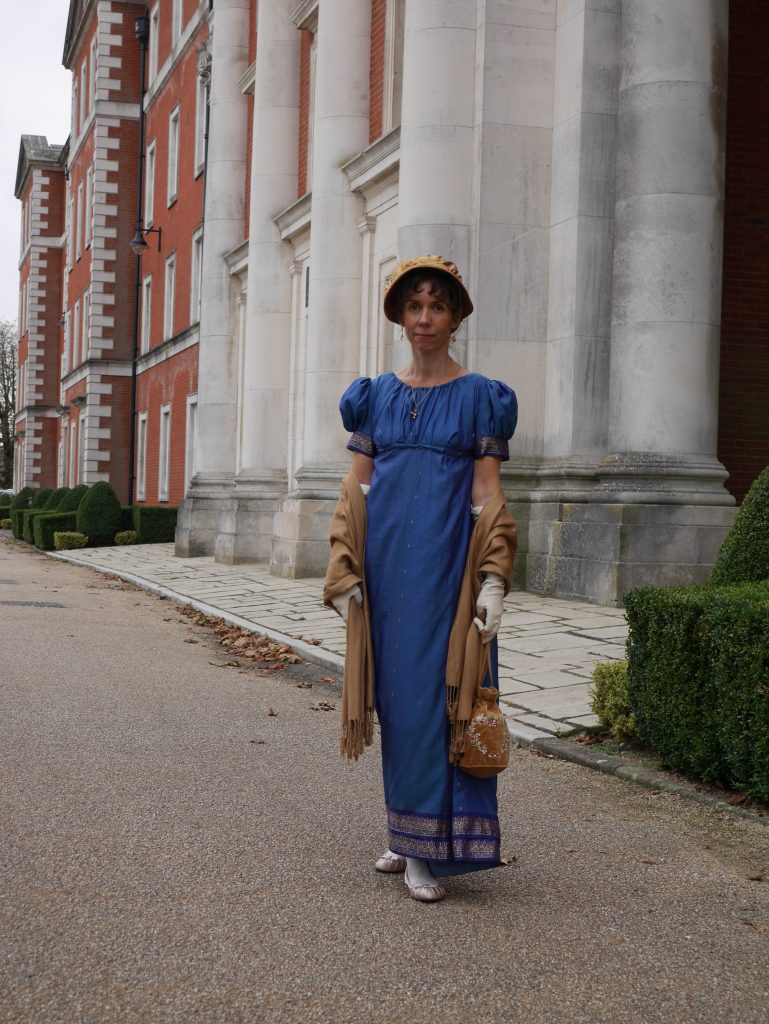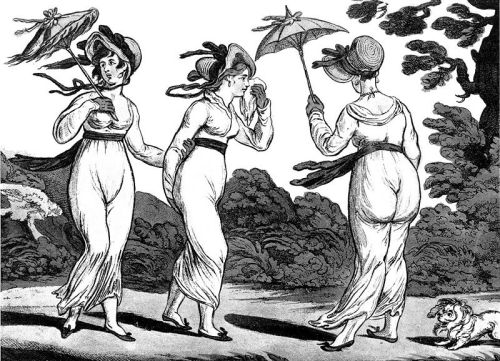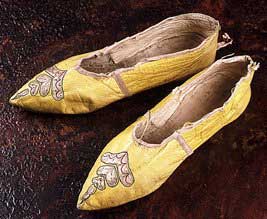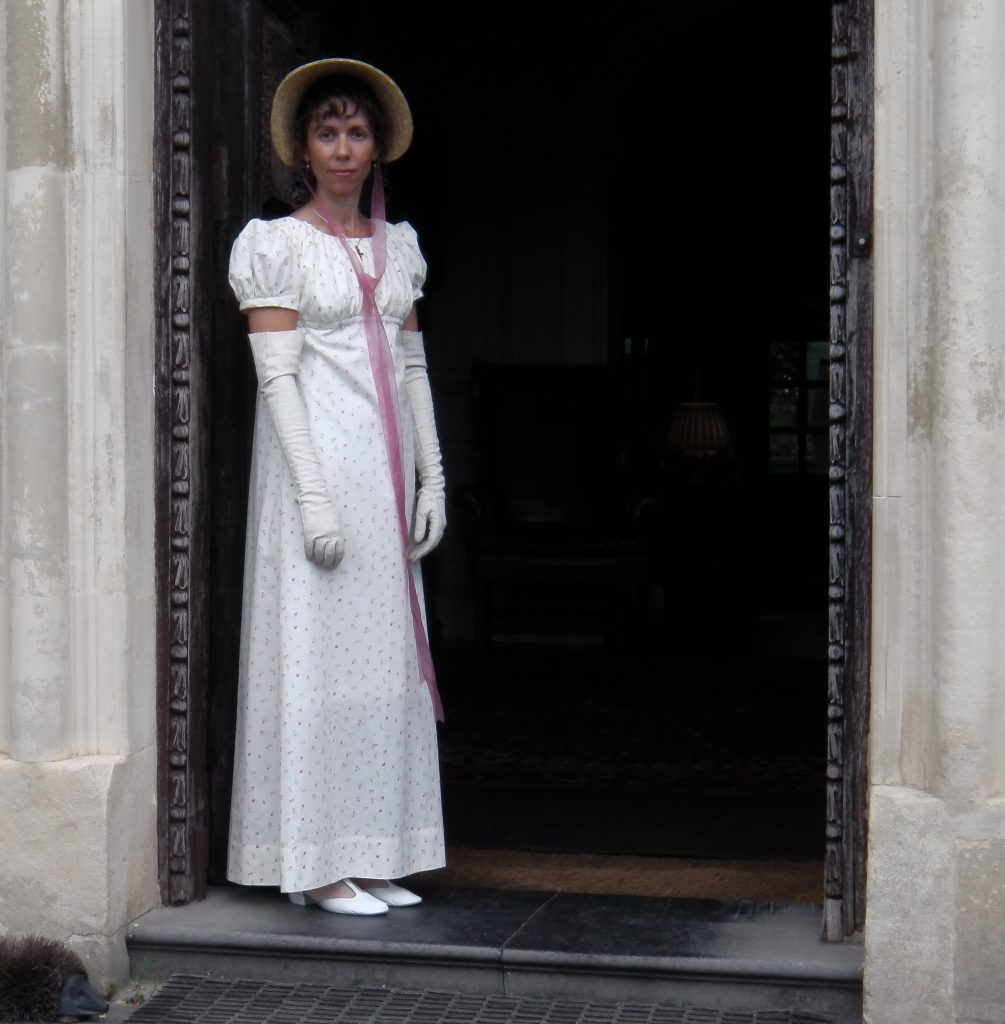Regency Fashion
There is nothing like putting on an item of clothing from a period of history that fascinates you, in order to begin to feel what it was like to live there.

When I first set about re-creating a Regency wardrobe I did what I always do, which is research the best sources for patterns of original garments, but because of the general simplicity and less structured nature of the style compared to the Georgian and Victorian eras, I didn’t anticipate that many secrets would be revealed. How wrong I was. The high waisted, empire line dresses hide a multitude of sins and they can make almost any shaped woman look elegant. The fabric however, normally a sprigged muslin or crisp silk, gathers around your legs as you walk and forces you to take elegant ladylike steps. At the time they became increasingly scandalous as the fabrics became more and more sheer. Woe betide any woman who had the misfortune of getting caught in a rain storm as she might as well be naked.
One of the most interesting items to me was the ladies’ tailored jackets, the pelisse (long) and Spencer (short). The sleeves are placed in a very different way to modern tailoring and they are set so far back that it is extremely difficult to use your arms but it does pull your shoulders back wonderfully and makes you walk as if you have spent a fortune on deportment classes.

The undergarments, when compared to the imprisonment of corsets in both the Georgian and Victorian eras, are freeing and must have felt to many women like being released from a prison of boning and lacing. You can breathe, and it is plain to see how Jane Austen was able to take long exhilarating walks around the muddy lanes of Steventon without swooning.
Hats come in many shapes and sizes and often feature flowers or fruit as decoration but I think it is the poke bonnet which is the most iconic look. When wearing one you feel cheekily hidden as if you can ‘people watch’, as Jane loved to do, but without being seen. There are many cartoons depicting the exaggerated shapes that developed from these but they are practical and easy to wear.

The joy of flat ballet pump style shoes cannot be overestimated, especially if you had been used to heels as most Georgian women had. Mass production was just beginning and you could consider buying several in different colours to match you desired gown rather than having to pay for expensive hand cobbled ones. They are also perfect if you don’t know your left from your right as they are made in identical straight pairs.

I love the freedom the clothes allow, the easy elegance yet practicality that results from them. It isn’t always easy to find the correct fabrics but as far as I can I reproduce garments using natural fibres that share a patterning as close to the original as possible. Silks from the East India Trading Company were most popular but cottons and muslins were the staple diet. Colours were far richer and diverse than most costume dramas show us but that is just one of the fascinating finds I’ve made with thanks to Pinterest and its tremendous source of galleries of original museum pieces, which is where I always start.